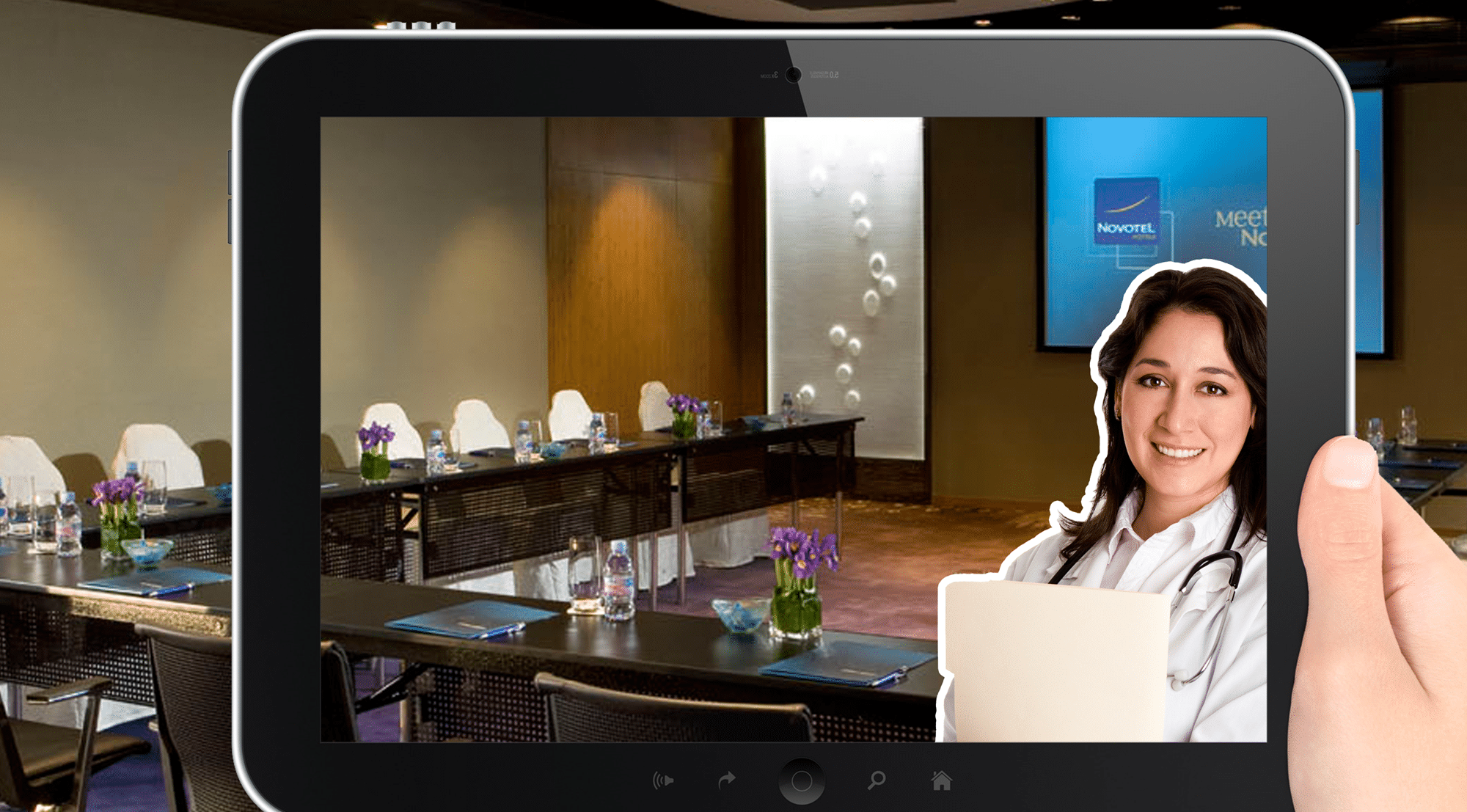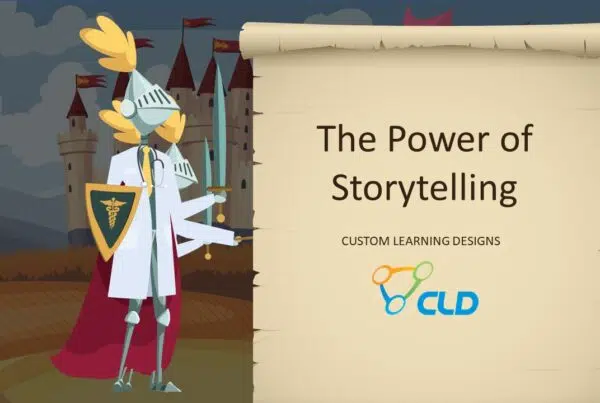Augmented reality (AR) is when digital information is integrated with the user’s environment in real time. It’s not a totally artificial environment, but overlays new information on top of the information in the existing environment. The “heads-up” displays in car windshields are examples of augmented reality, as is the yellow “first-down” line you see on televised football games. AR is applicable to many industries including healthcare, petroleum, marketing, and possibly sales training and pharmaceutical sales.
Augmented Reality and Virtual Reality Aren’t the Same
Whereas augmented reality blends virtual reality with here-and-now real life, the people using it are able to interact with virtual content within the real world, and can easily distinguish between the two, as you can when the first-down line appears on the football game you’re watching. Virtual reality, on the other hand, creates an entire virtual world with which users can interact.
With virtual reality, the virtual world is designed so users are immersed in it and cannot easily tell what is real and what is not. Usually, it requires wearing a special helmet or goggles that block out the real world. Virtual reality is so immersive that you may see a person fall over, or flinch due to something he or she experiences in the virtual world, whether it’s a game or some sort of simulator. Virtual reality is more suited to immersive games and to virtual social networking (as in Second Life).
How Augmented Reality Could Be Used in Sales Training
Virtual reality has been used in aerospace training for a long time, in the form of flight simulators. The point of this type of training is to allow someone to try something new or practice a skill in a safe environment. For example, a surgeon could try out a new technique virtually before actually trying it on a patient.
Likewise, augmented reality offers a built-in collaborative quality that can be used in a training environment. It can be used for sharing an experience, allowing both trainer and trainee to see the same thing at the same time, facilitating communication. This is especially important in an integrated sales training world where training is designed with an eye to other important aspects of the sale process, like a go-to-market strategy.
How It Can Be Used in the Pharma Sales Process
Augmented reality may find a prominent place in the actual sales environment as well. High-quality content has been a cornerstone of successful pharmaceutical sales because clients demand relevant, current, high-quality content that they can ingest in a short amount of time. Just as the virtual first-down line provides instant information on the status of a football game, so might AR helps pharma sales reps convey complex information more thoroughly and concisely.
In fact, many pharmaceutical companies are exploring the ways in which augmented reality might offer a market differentiator, by allowing reps to provide their customers with a next-generation customer experience at any point along the sales process.
It’s important to see augmented reality not so much as a new technology set to bowl over trainers, pharma reps, and clients, but as a set of tools that facilitates communication. New as the technology is in the sales context, many advantages are already making themselves apparent:
- It shows reps and clients that your business evolves with technology.
- It helps present engaging content to the target market, saving time on everyone’s part.
- It can help set apart content from that of competitors.
- Guidelines and instructions can be presented more accurately than with a non-augmented mobile screen.
- It facilitates training, making it more effective and efficient.
Obviously, there is still a way to go, but future trends to look for include wider availability and better budget-friendliness of AR handsets, the development of marketing solutions that specifically incorporate the technology, and greater inclusion as a built-in feature on mobile devices.
No Single Answer Meets Every Training Need
As with any hot new technology, it’s important for training managers not to put every one of their hopes into the promise of augmented reality. Like gamification and e-Learning, it is expected to become another great tool that trainers can employ in conjunction with others. The advantages of blended learning have been known for a while now. Different learning styles are effective with different people, and the use of a variety of tools and technologies helps ensure everyone is presented with learning content in a format they’re good at assimilating. Just as gamifying every aspect of pharma sales training would be too many eggs in one basket, relying too heavily on AR could be less than ideal as well.
As you may expect, the video game industry is leading the way with augmented and virtual reality in 2016, but these technologies are about far more than games and entertainment. We’re still learning how augmented content can be best presented and where it will reside in terms of IT infrastructure, but it wasn’t that long ago that ordinary streaming video on demand was a novelty, and now it’s ubiquitous.
Already, augmented reality is being tested in training scenarios, and in one study where students were asked to assemble a virtual airplane wing, the students who used AR for instruction had a sharp reduction in error rates compared to ordinary e-Learning in a desktop environment. Expect new AR designs, concepts, and applications to develop quickly over the next few years, both in the world of training and in general.
Training in the pharmaceutical industry is never static due to progress in technology, research, and the ever-changing nature of industry and government regulations. Trainers are continually asked to do more with less, and technology is often the answer to being able to do this. We encourage you to explore our blog content, for the latest information on technological advances, learning research, neuroplasticity, and other topics of interest to the forward-looking pharma trainer.





